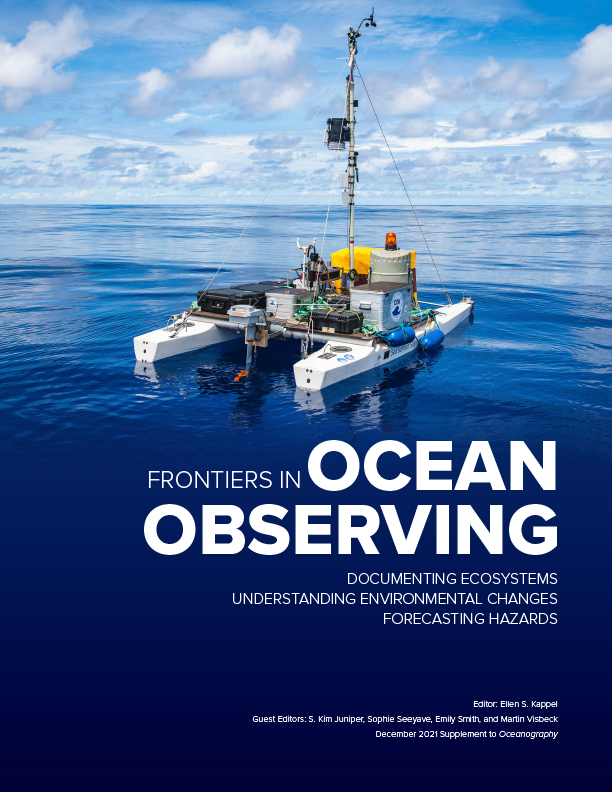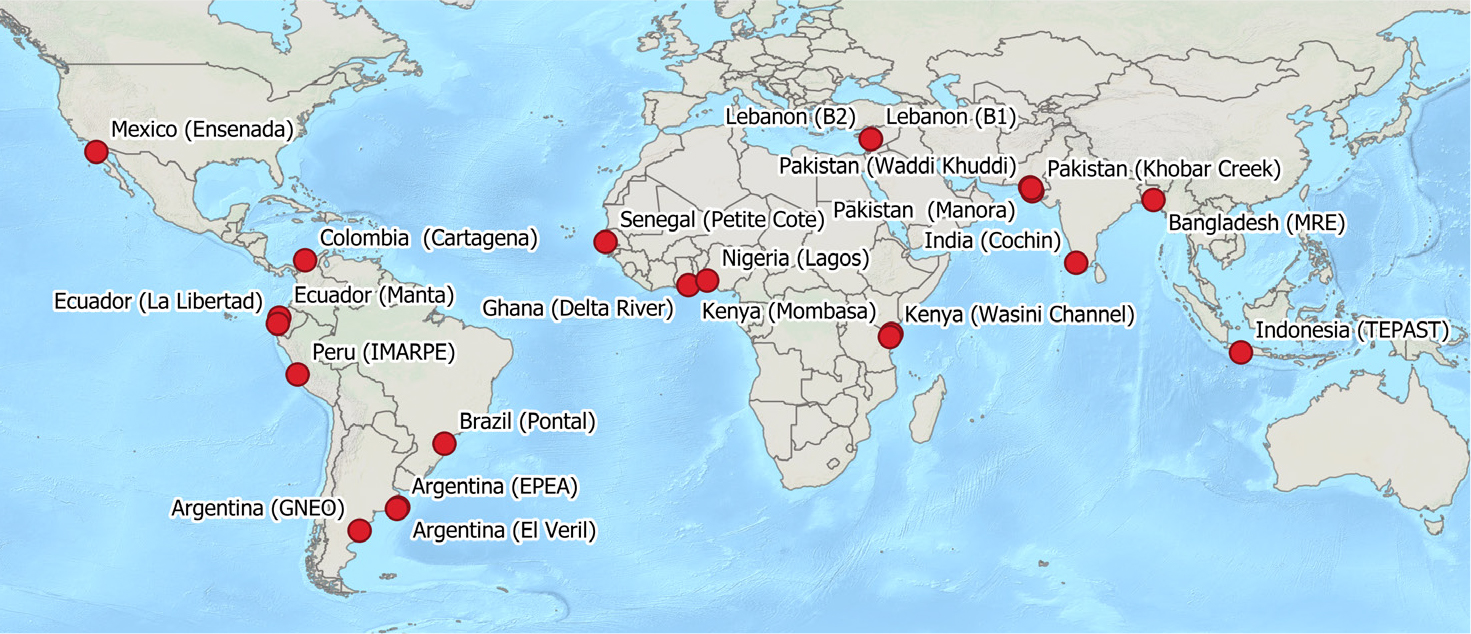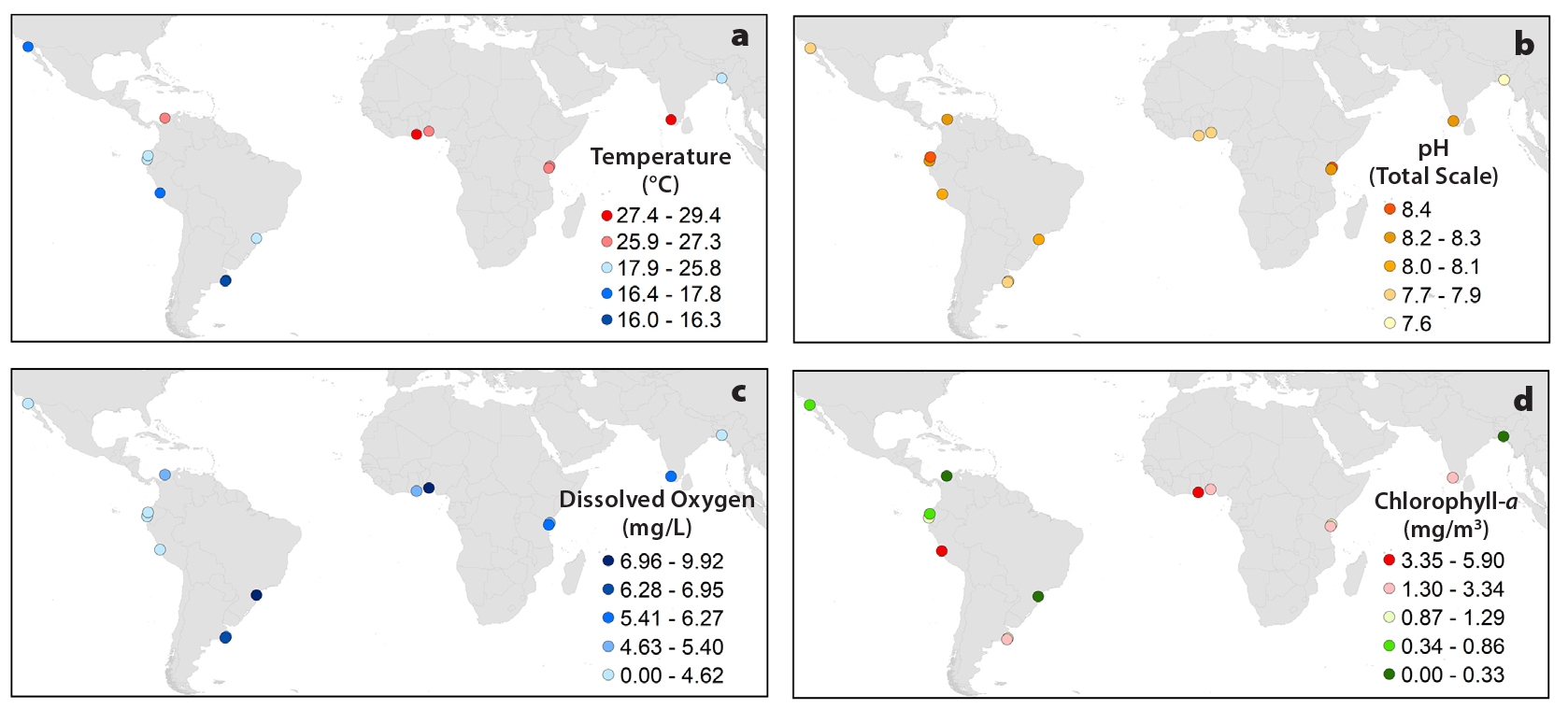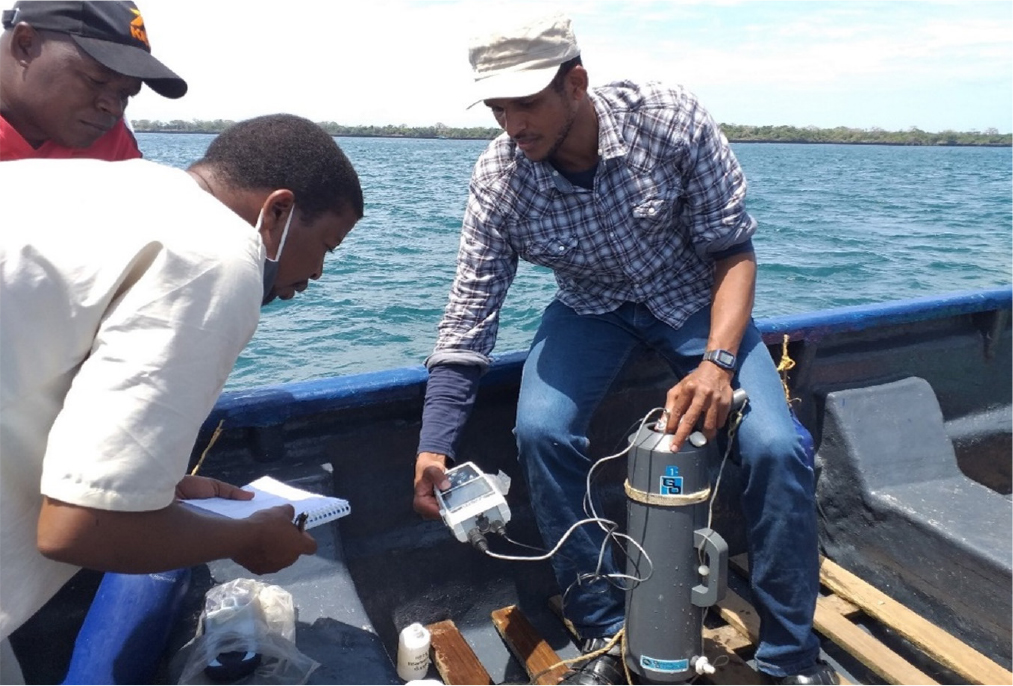Full Text
The ocean benefits humankind by producing half of the global oxygen supply, absorbing a significant portion of atmospheric carbon dioxide, and providing us with food, transportation, and a means of livelihood. Nevertheless, human activities have been making the global ocean more acidic, warmer, and lower in oxygen (IPCC, 2021). Such changes and their impacts on ecosystems are highly variable, particularly in coastal areas where exchanges with the atmosphere and the land are more pronounced.
The capacity to collect ocean observations is insufficient in many parts of the world, particularly in developing countries (IOC-UNESCO, 2020). This is linked not only to a dearth of funding and instrumentation but also to a lack of scientific personnel with the capacity to collect, analyze, and interpret oceanographic data. The Partnership for Observation of the Global Ocean (POGO) runs capacity development programs whose objectives are to develop key skills, capabilities, and capacities needed for worldwide ocean observations, and to nurture new generations of experts and leaders in ocean affairs (see Urban and Seeyave, 2021). Since 2004, the partnership between POGO and the Nippon Foundation (NF) has offered an extensive array of training programs to nearly 500 early career scientists from 74 countries, mainly with emerging economies. The NF-POGO Alumni Network for the Ocean (NANO) was created in 2010 as a means to keep track of trainees’ career progressions, maximize the benefits from the training received, and provide further opportunities for networking and collaboration. One of NANO’s major goals is to promote joint research activities among its members, ultimately applying ocean observations for societal benefit. Between 2012 and 2017, with the support of NF and POGO, NANO members successfully conducted five joint regional research projects that involved nearly 100 researchers from 21 countries and used coastal monitoring to study such issues as harmful algal blooms, eutrophication, coastal erosion, and invasive species.
NANO Global Research Project
In 2017, NANO launched the research project “A global study of coastal Deoxygenation, Ocean Acidification, and Productivity at selected sites” (NANO-DOAP), which takes advantage of its members’ global distribution and their affiliations with institutions that can provide facilities for coastal monitoring. This project aims to advance knowledge and observation of the coastal ocean by consolidating existing, or establishing new, monitoring stations for Essential Ocean Variables (EOVs) in the alumni locations. Currently, the project encompasses 22 sampling sites in 15 countries in Asia, Africa, and Latin America (Figure 1). For more information on NANO-DOAP, visit https://nf-pogo-alumni.org/projects/global/).
|
|
Project Outcomes
Fieldwork began in December 2018 with modest financial support from NF-POGO. Participants collect data on temperature, salinity, pH, dissolved oxygen, and chlorophyll-a concentration at the ocean’s surface monthly or bimonthly (Figure 2). Additional sampled parameters (e.g., total alkalinity, suspended particulate matter, plankton community structure) are not required but are welcomed and vary among sampling sites.
|
|
NANO-DOAP stations are not all fully equipped and, because local conditions and resources vary, sampling frequency and instrumentation are different from station to station. Thus, data calibration is underway to allow inter-station comparison. It is expected that the quality-controlled in situ data set, combined with satellite-derived data1, will offer insights into spatial and temporal variations in productivity, acidification, warming, and deoxygenation.
Promoting capacity development and outreach are also aims of NANO-DOAP. Since 2019, the project has organized regular, public webinars (13 to date) where NANO members and friends (mentors and instructors who contribute to NF-POGO trainings) present topics related to the scope of the project, sharing experiences and best practices. The NANO Webinar Series is increasing its live audience with every webinar.
NANO-DOAP participants are engaged in local outreach activities such as delivering seminars and conducting beach activities with school children and the general public, explaining matters of ocean acidification, microplastics, and the importance of sustained ocean observations. Furthermore, two NANO-DOAP sampling stations serve as platforms for citizen science initiatives, training local communities in using oceanographic instrumentation. The Argentinean El Veril NANO-DOAP station involves recreational divers interested in learning about ocean acidification and climate change impacts in its sampling campaigns. The participants at the Kenyan Mombasa station, which is located near a community coral restoration project (REEFolution Kenya), take community members with them on the sampling campaigns and provide instruction on how to work with data-gathering instruments (Figure 3).
|
|
Contributing to Science and Community
Initiatives such as NANO-DOAP can yield several benefits for the ocean sciences. Existing funding and support for early career ocean scientists and professionals are insufficient, particularly in developing nations (IOC-UNESCO, 2020). This project, run by alumni, can be seen as a continuation of the training acquired at NF-POGO programs and serves as an opportunity to expand international collaboration and to acquire experience in project management. It also provides the possibility of “cascade training,” as the members use fieldwork excursions and data collected at NANO-DOAP stations to provide hands-on training to undergraduates and graduate students at their institutions, as well as valuable community outreach and ocean literacy opportunities with engaged locals. Furthermore, the financial support allows the creation of new coastal monitoring stations and helps sustain others that are already established but under-resourced. It is expected that, with time, both the institutions the alumni are affiliated with and their local governments will see the value of the participating stations of these coastal stations and help secure funding for long-term monitoring.
Acknowledgments
Thanks to the Nippon Foundation and the Partnership for Observation of the Global Ocean for the financial support of the NANO-DOAP project.




